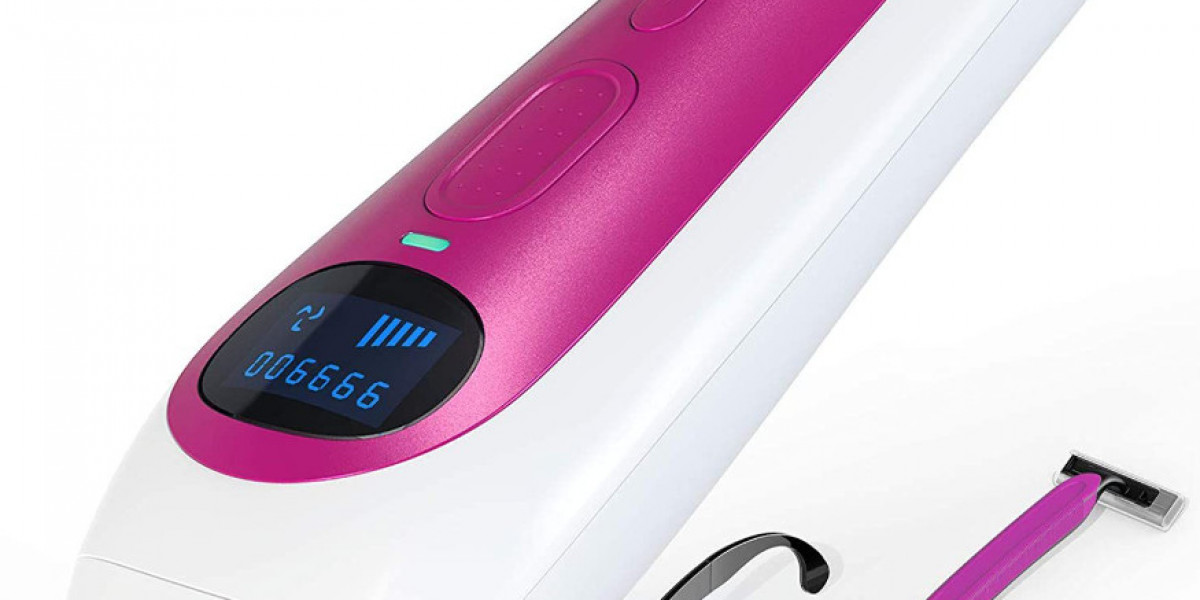A laser removal device is a revolutionary tool used in cosmetic treatments to eliminate unwanted hair, tattoos, and skin blemishes. These devices utilize focused light energy to break down pigments in hair follicles, tattoo ink, or skin irregularities, ensuring effective results without invasive procedures.
With advancements in technology, laser removal devices have become more precise, offering targeted treatments with minimal discomfort. This article explores how these devices work, their applications, and why they have gained immense popularity in personal and professional skincare.
How a Laser Removal Device Works
A laser removal device operates by emitting concentrated beams of light that penetrate the skin to target specific pigments. The device’s laser energy is absorbed by darker pigments, such as melanin in hair or ink particles in tattoos, breaking them down into tiny fragments that the body naturally eliminates.
The key principle behind this technology is selective photothermolysis, which ensures that only the targeted area absorbs the laser’s energy while leaving the surrounding skin unharmed. The wavelength of the laser determines what type of pigment it affects, making these devices versatile for different treatments.
For Hair Removal: The laser energy is absorbed by melanin in the hair follicle, heating and destroying the follicle to prevent regrowth.
For Tattoo Removal: The laser breaks down ink particles, which are then processed and eliminated by the body's immune system.
For Skin Treatments: Certain laser devices target pigmentation issues, scars, and acne by stimulating collagen production and skin renewal.
The controlled nature of these treatments makes laser removal a preferred choice for those seeking long-term cosmetic improvements.
Different Types of Laser Removal Devices
1. Diode Laser Removal Devices
Diode lasers emit longer wavelengths, making them effective for deeper penetration into the skin. These devices are commonly used for hair removal and work well on a variety of skin tones.
2. Alexandrite Laser Removal Devices
These lasers offer shorter wavelengths, making them effective for lighter skin tones. They are widely used for hair removal and are known for their quick treatment times.
3. Nd:YAG Laser Removal Devices
Nd:YAG lasers use longer wavelengths that penetrate deeper into the skin, making them ideal for tattoo removal and treating darker skin tones. They can also be used for vascular treatments and skin rejuvenation.
4. PicoLaser Removal Devices
Pico lasers use ultra-short pulses to break down pigment particles without excessive heat, reducing the risk of skin damage. These are highly effective for tattoo removal and pigmentation treatments.
Each type of laser removal device is designed for specific skin types and treatment purposes, ensuring that users receive optimal results.
The Growing Popularity of Laser Removal Devices
The demand for laser removal devices has significantly increased due to their efficiency, precision, and long-lasting results. Clinics, med spas, and even at-home users rely on these devices for various cosmetic procedures.
1. Professional Clinics and Med Spas
Dermatologists and cosmetic professionals use advanced laser removal devices to provide hair removal, tattoo fading, and skin rejuvenation services. The expertise of professionals ensures that the right laser settings are used for different skin and hair types.
2. At-Home Laser Removal Devices
Many brands now offer consumer-friendly laser removal devices designed for safe home use. These devices come with adjustable settings, allowing users to perform treatments conveniently.
The ease of access to laser technology has made cosmetic treatments more widely available, eliminating the need for frequent salon visits.
Tattoo Removal with a Laser Removal Device
Tattoo removal has seen remarkable progress with laser removal devices. Traditional methods such as dermabrasion and surgical excision were painful and left scars. However, laser technology provides a non-invasive alternative that gradually fades unwanted tattoos over multiple sessions.
How It Works
The laser targets the ink pigments embedded in the skin.
The high-energy pulses break the ink into tiny fragments.
The body’s immune system gradually removes these fragments over weeks.
Since different tattoo inks absorb varying wavelengths of light, multiple laser sessions are required to achieve complete removal. Darker colors like black absorb laser energy more easily, making them easier to remove compared to lighter colors.
Hair Removal with a Laser Removal Device
One of the most common uses of a laser removal device is permanent hair reduction. Unlike waxing or shaving, laser hair removal disrupts hair growth at the root, offering longer-lasting results.
How It Works
The laser emits light that is absorbed by melanin in the hair follicle.
The absorbed energy converts into heat, damaging the follicle.
This process slows down hair regrowth, and after multiple sessions, hair becomes finer and less dense.
Since hair grows in cycles, laser treatments must be repeated to target all active follicles. The effectiveness of laser hair removal depends on skin type, hair color, and the device’s wavelength.
Skin Rejuvenation with a Laser Removal Device
Apart from hair and tattoo removal, laser removal devices are widely used in skincare treatments to address:
Acne scars
Sunspots
Wrinkles
Uneven skin tone
These treatments work by stimulating collagen production and removing damaged skin layers. Over time, the skin appears smoother, firmer, and more youthful.
Many dermatology clinics incorporate laser-based facials that provide deep skin renewal, making laser removal devices an integral part of modern skincare routines.
Safety and Aftercare for Laser Treatments
While laser removal devices are designed for safe use, proper aftercare is essential to ensure optimal results and minimize side effects.
Before Treatment
Avoid sun exposure for at least two weeks.
Do not use tanning products or undergo chemical peels.
Shave the treatment area if undergoing hair removal.
After Treatment
Apply soothing creams to reduce redness and irritation.
Avoid direct sunlight and use sunscreen to protect treated skin.
Stay hydrated and follow post-treatment care instructions provided by professionals.
Proper care helps in faster healing and prevents complications such as hyperpigmentation or temporary redness.
Final Thoughts
A laser removal device is an advanced tool that has transformed the way people approach cosmetic treatments. From removing unwanted hair and tattoos to rejuvenating the skin, laser technology offers precise and long-lasting results.
With various types of lasers available, users can choose the most suitable device based on their skin type and treatment needs. Whether used professionally in dermatology clinics or at home for personal care, laser removal devices continue to evolve, making aesthetic treatments more effective and accessible.
The innovation behind these devices ensures that cosmetic concerns can be addressed with minimal downtime, providing individuals with confidence and long-term beauty solutions.








